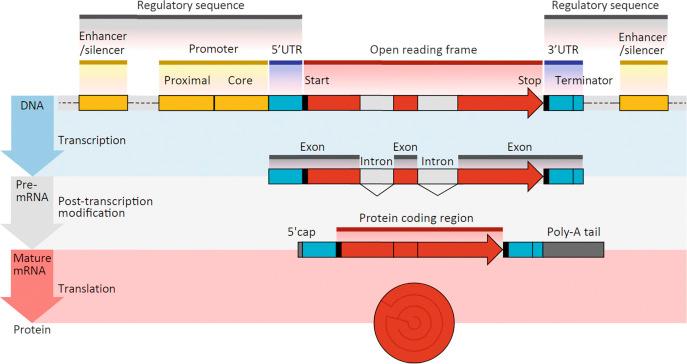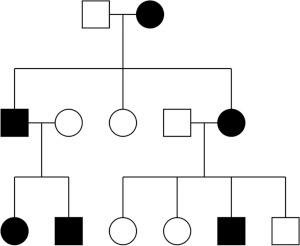Physical Address
304 North Cardinal St.
Dorchester Center, MA 02124
Few areas in medicine have seen such rapid and dramatic advances in knowledge and technology as the field of genetics has over the past two decades. Breakthroughs such as the mapping of the human genome and technological advancements enabling rapid gene sequencing have not only greatly enhanced our understanding of common and uncommon disorders but also changed the way the medical profession approaches the diagnosis, prevention, and treatment of disease. In the field of obstetrics and gynecology, the ability to map fragments of cell-free placental DNA to specific chromosomes has led to highly accurate screening tests for common aneuploidies. Similarly, the use of genomic hybridization techniques has enabled the detection of small variations in genomic composition below the resolution of conventional karyotype that are now known to be responsible for a variety of genomic disorders. The impact of precision medicine remains fledgling in the field of perinatal medicine, but with its growing utility in other areas of medicine, especially with regard to targeted pharmacologic therapy, it is very likely that we will see similar application of precision medicine to perinatal medicine in the coming years.
Genetics is no longer a field of rare diseases that only a few need to understand. With our rapidly growing understanding of the human genome, it is clear that there is a genetic underpinning to almost all medical conditions, structural abnormalities, and functional disorders. Modern genetics and genomics provide the medical professional deeper insight and more information into medical disorders with far less material and less invasive approaches than ever before. With the increasingly commonplace application of genetic and genomic principles to the diagnosis and management of many disorders, it is essential that all providers develop an understanding of the basic principles underlying the field of genetics.
The field of medical genetics focuses on the contribution of changes (or “variants”) in individual genes to human variation and disease. In contrast, genomics focuses on all of the genes, called the genome, and how multiple genes interact and function to result in either a state of health or disease. The study of genomics has only become possible recently with advances in DNA sequencing technology.
The cell nucleus and the mitochondria contain all of the genes in humans. The 46 nuclear chromosomes—22 paired autosomes and 2 sex chromosomes—contain the majority of this genetic material. Although the Y chromosome contains only a few genes in addition to those responsible for male sexual differentiation and development, the X chromosome has a number of genes that are integral to normal development and physiologic function for both sexes.
There are approximately 3 billion base pairs of DNA per human genome, and DNA length is normally measured in kilobases (1000 bases, kb) or megabases (1,000,000 bases, Mb). Humans have between 20,000 and 23,000 genes—fewer than the 40,000 postulated before the completion of the Human Genome project; this represents only approximately 10%–15% of the total complement of the DNA.
Each gene contains the information necessary for production of an intact protein and is composed of sequences of DNA that contain regulatory elements and coding regions ( Fig. 1.1 ). Four purine and pyrimidine bases are the building blocks for each gene and ultimately determine the protein sequence produced. Exons are the segments of coding DNA that are transcribed into messenger RNA (mRNA), which then serves as the template from which the amino acid sequence, and ultimately the protein structure, is determined. A series of three nucleotide base pairs, termed a codon, determines the amino acid to be added to the building protein chain as the mRNA is translated. Because there are 64 possible codons and only 20 amino acids, there is redundancy with many amino acids coded for by multiple codons.

Introns are noncoding regions within the gene that separate exons. Although introns were once thought to be “junk” DNA, it is now known that DNA sequences within the introns play a role in gene regulation and expression. For example, some genes may encode multiple proteins with the ultimate protein product determined by how the exons are spliced together, a process controlled by the DNA sequences within the introns. Other noncoding regulatory regions are located outside the coding region of the gene in the upstream 5′ untranslated region and the downstream 3′ untranslated region. In addition to these DNA segments that are actually transcribed into the initial mRNA transcript, a number of other DNA regulatory elements that allow for binding of molecules involved in control of transcription are located in the 5′ upstream area, e.g., promoter region, or TATA box.
The complexity of these regulatory processes is far more involved than previously thought, and the role of genetic variation in these regulatory elements and in the molecules they bind in human disease is only beginning to be understood. In addition to changes in the DNA sequence affecting gene transcription, other modifiable processes can also alter gene expression. Epigenetic changes, such as DNA methylation and histone acetylation, control gene transcription by preventing or facilitating binding of key molecules involved in DNA transcription. Such changes appear to play a role in tissue-specific and time-specific gene expression.
Although greater than 99% of DNA is identical from one individual to the next, genetic variation occurs at various sites throughout the genome. The different variants that exist at any one site or locus are termed alleles . Polymorphisms are differences in DNA that occur in the population throughout the genome and can consist of single nucleotide changes or duplications or deletions of larger segments of DNA. Most polymorphisms are benign and do not result in alteration of protein function, although some polymorphisms have been associated with altered protein function (e.g., factor V Leiden). Mutations are changes in DNA sequence that result in altered protein production, structure, or function.
Single nucleotide polymorphisms (SNPs) are the replacement of a single base for another in the DNA sequence. SNPs are the most common form of genetic variation and occur approximately every 200–300 base pairs. Such substitutions typically have no significant effect on gene function, but depending on the location, significant effects on protein production or function can be seen. The distinction between a polymorphism and a mutation is to some degree a matter of semantics, but historically polymorphisms have largely been viewed as benign genetic changes that are found in the population more commonly than mutations are thought to occur.
Nonsense mutations result when the base substitution results in a change that alters the codon for an amino acid to one for a stop codon, leading to premature termination of protein synthesis from the mRNA molecule. Missense mutations occur when the SNP changes the codon for one amino acid to that for another amino acid; depending on the amino acid change, the structure and function of the protein may be changed. Splice site mutations are those that occur at an intron-exon boundary and affect the normal splicing of mRNA such that an intron is retained or an exon skipped in the mature mRNA molecule. Silent mutations occur when there is no change in the amino acid sequence because although the DNA sequence changed, the amino acid coded for by the mRNA codon did not change because of redundancy in the genetic code. In addition to point mutations, which retain the same number of nucleotides, insertions or deletions of bases can also occur. Most commonly involving one or two bases, such insertions or deletions cause frameshift mutations and alter the reading frame of the codons in the mRNA. The amino acid sequence downstream from the insertion is typically altered substantially.
In addition to intragenic changes, polymorphisms can also occur in regulatory regions. These regulatory polymorphisms may alter the binding of transcription factors, enhancers, silencers, or similar molecules. The protein sequence remains intact, but protein expression can be substantially altered.
Classic Mendelian genetics is based on the principle that a specific disease or phenotype is determined by a single gene. Although the phenotype of an individual with a specific disorder is largely due to the specific mutations present at the genetic locus, in many disorders not all individuals with the same genotype manifest the identical phenotype because of the potential effects of a number of modifying genes that also contribute to the phenotype. Nonetheless, when considering the occurrence of genetic disease, the original framework of Mendelian genetics remains an important foundation upon which to build an understanding of the inheritance of genetic disease.
All genes located on the autosomes (chromosomes 1–22) are inherited in a biallelic (two copies) fashion. If one of the alleles at a specific locus is expressed in preference to the other, and hence defines a specific disorder or phenotype, that condition is considered to be inherited in an autosomal dominant fashion. Autosomal dominant inheritance is characterized by transmission of the associated allele to 50% of offspring, the presence of the disorder in both sexes, and the possibility of male-to-male transmission ( Fig. 1.2 ). In addition, the phenotype of individuals who inherit an autosomal dominant disorder is also influenced by the penetrance and expressivity of the associated allele. Penetrance reflects whether the mutant allele is expressed or not. For an individual, the gene is either penetrant or nonpenetrant, but when all individuals with the mutant gene are considered, the gene is considered to have either complete penetrance , meaning that all individuals who inherit the allele will express the disorder, or incomplete penetrance , when only a portion with the mutated gene express the disorder. Although incomplete penetrance may account for the appearance that some disorders will skip a generation, some autosomal dominant disorders have age-related penetrance and do not manifest until later in life (e.g., some forms of Alzheimer disease). In the case of tumor suppressor genes (e.g., BRCA1 ), some require a second hit to result in clinical disease. Expressivity describes the variation in the phenotype from mild to severe that is seen in individuals who inherit a mutation at a disease locus. Variable expressivity can be related not only to the specific mutant allele inherited and its effect on protein function and production but also to the effect of other modifying genes. Many disorders have allelic heterogeneity in which many different mutant alleles have been described and are responsible for clinical disease. This can be a potential explanation for variable expressivity. The same phenomenon of allelic heterogeneity occurs in autosomal recessive disorders as well.

In some cases, both alleles of a gene are different from each other but are equally expressed and affect the phenotype produced. Although not often considered in the classic pattern of inheritance, this type of inheritance and gene expression is termed codominant. Examples of this type of inheritance include the ABO blood group antigens (e.g., A on one gene and B on the other resulting in AB blood group) and the β-globin gene (e.g., hemoglobin S allele on one gene and hemoglobin A allele on the other, resulting in sickle trait).
Become a Clinical Tree membership for Full access and enjoy Unlimited articles
If you are a member. Log in here